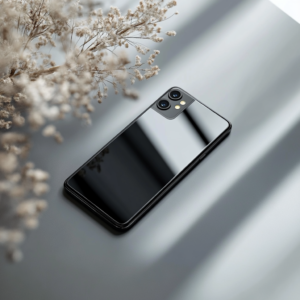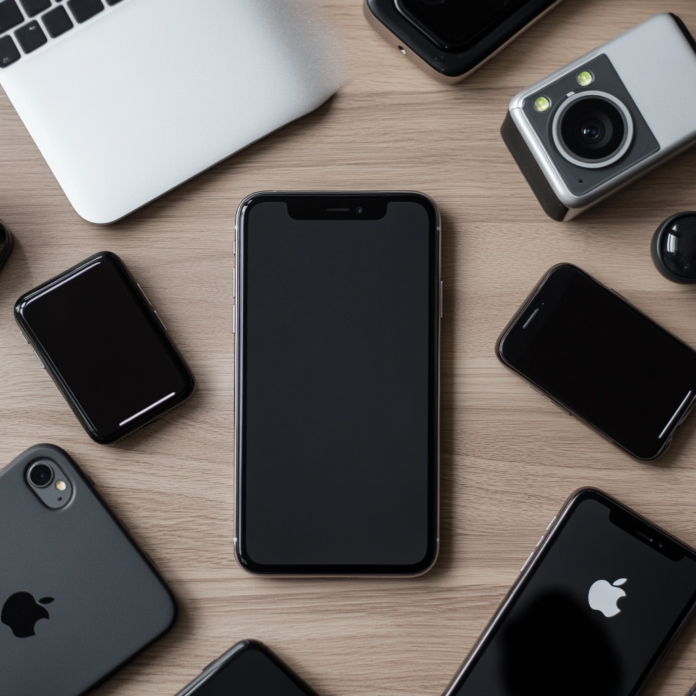1. Introduction
The Rise of Foldable phones is reshaping the mobile industry by merging portability with expansive display capabilities. In this article, I share my personal insights and extensive research on the latest foldable smartphones. I examine the pros, cons, and real-world reviews of various models to provide you with a comprehensive guide on how The Rise of Foldable phones can transform your digital experience. Throughout the text, you will find valuable internal links to VikingBytes.com articles such as Smartphone Camera Comparisons: Which Phone Shoots Best? and Budget PC Buying Guide, as well as external resources like GSMArena and TechRadar for the latest specifications and expert analyses. “The Rise of Foldable” is central to this discussion and appears frequently to emphasize its importance. In the following sections, we will delve into the evolution, key technologies, pros and cons, and market impact of these innovative devices.

2. History and Evolution of Foldable Phones
2.1 Early Concepts and Prototypes
Foldable phone technology emerged in the early 2000s as a visionary concept. Early prototypes from companies like Nokia and Sony showcased flexible displays that hinted at merging a tablet’s large screen with the portability of a smartphone. These initial models, though groundbreaking, were limited by durability issues and high production costs. Despite their experimental nature and clunky designs, they captured the imagination of tech enthusiasts and served as the starting point for what would eventually become a major trend. These early efforts laid the foundation for future innovations that would refine and perfect the foldable form factor.
2.2 From Prototype to Mainstream
As consumer demand for versatile mobile devices grew, major brands such as Samsung, Huawei, and Motorola began investing heavily in foldable technology. The evolution from bulky prototypes to sleek, market-ready products marks a significant turning point. Modern foldable phones now feature refined hinge mechanisms, ultra-thin glass, and durable polymers that overcome the early limitations. Software advancements have also played a role by optimizing the user interface for both folded and unfolded states. This transition has enabled foldable devices to gain traction in mainstream markets, demonstrating that The Rise of Foldable phones are no longer just a novelty but a disruptive force in mobile innovation. For more details on this evolution, visit TechRadar’s foldable phones section.
3. Key Technologies Behind Foldable Phones
3.1 Flexible OLED Displays
Flexible OLED displays are the cornerstone of foldable phone technology. They allow the screen to bend without compromising on image quality, delivering vibrant colors, deep blacks, and high contrast ratios regardless of the device’s position. Continuous advancements in OLED technology have led to displays that can endure repeated bending, ensuring that the visual experience remains consistent over time. These displays are crucial in delivering the expansive viewing experience that defines The Rise of Foldable phones.
3.2 Advanced Hinge Mechanisms
The hinge mechanism is arguably the most critical and complex component of a foldable phone. Advanced multi-axis hinges enable smooth transitions between folded and unfolded states while distributing mechanical stress evenly across the device. This innovation not only enhances the user experience but also plays a vital role in prolonging the lifespan of the phone by minimizing wear and tear. A robust hinge is essential for ensuring that the flexible display remains intact over countless folds.
3.3 Durable Materials and Build Quality
Durability is a key challenge for foldable phones, and manufacturers address this by using innovative materials. Ultra-thin glass and high-strength polymers protect the flexible display from scratches and creases, ensuring the device remains functional even after repeated use. The combination of a flexible OLED display, advanced hinge mechanisms, and durable construction defines The Rise of Foldable phones as a viable option in a competitive market.
4. Pros of Foldable Phones
4.1 Expansive Screen in a Compact Form
One of the most compelling advantages of foldable phones is their ability to provide a large, tablet-like display that folds into a compact, pocketable device. This unique design allows users to enjoy an immersive viewing experience for media, gaming, and multitasking without compromising portability. The dual functionality is a major selling point, enabling a seamless transition from a small phone to a large-screen device whenever needed.
4.2 Enhanced Multitasking and Productivity
Foldable phones offer enhanced multitasking capabilities that can significantly boost productivity. When unfolded, these devices support split-screen modes and dynamic app layouts that allow multiple applications to run simultaneously. This feature is particularly useful for professionals who need to work on emails, video conferencing, and document editing all at once. The ability to efficiently manage several tasks on a single device is one of the key benefits driving The Rise of Foldable phones.
4.3 Innovative Software Features
In addition to hardware advancements, foldable phones come equipped with innovative software that adapts the user interface based on the device’s configuration. Features like app continuity, adaptive layouts, and context-sensitive functions provide a seamless user experience whether the phone is folded or unfolded. These intelligent software enhancements ensure that the transition between different modes is smooth, further enhancing the appeal of The Rise of Foldable phones.
5. Cons of Foldable Phones
5.1 Durability and Creasing Issues
Despite impressive technological progress, durability remains a challenge for foldable phones. The flexible display and hinge mechanism, while innovative, are inherently more vulnerable to wear compared to traditional rigid screens. Creasing along the fold line can detract from both aesthetics and functionality, raising concerns about the long-term reliability of these devices. Users may need to handle them with extra care, which can be a drawback for some.
5.2 Higher Price Points
Foldable phones typically command a premium price due to the advanced technology and complex engineering required. This higher cost can be a barrier for budget-conscious consumers, limiting the accessibility of these innovative devices. The additional expense may not be justifiable for everyone, especially if the unique features do not align with the user’s needs.
5.3 Battery Life and Design Limitations
The design of foldable phones, which often includes dual displays and intricate hinge systems, tends to consume more power than traditional smartphones. As a result, battery life may be compromised, and users might experience shorter usage times between charges. Additionally, design limitations such as thicker bezels or bulkier profiles can impact the overall user experience.
6. Design Innovations and Durability
6.1 Modern Aesthetics and Ergonomics
Foldable phones are celebrated for their sleek, futuristic designs that set them apart from conventional smartphones. Minimal bezels, slim profiles, and innovative form factors contribute to a modern aesthetic that appeals to tech enthusiasts. Despite the complexity of their construction, many foldable devices are designed with ergonomics in mind, ensuring they remain comfortable to use even with additional moving parts.
6.2 Innovations in Protective Technologies
To enhance durability, manufacturers have introduced advanced protective technologies. Reinforced hinge systems, scratch-resistant coatings, and the use of ultra-thin yet durable materials work together to minimize creasing and physical damage. These innovations significantly extend the lifespan of The Rise of Foldable phones, ensuring that the device remains functional despite repeated use. For more details on design innovations, visit GSMArena’s design review section.
7. In-Depth Reviews and Comparisons
7.1 Benchmark Reviews and Lab Data
Objective data from reputable testing platforms such as DXOMARK provide critical benchmarks on aspects like display quality, camera performance, and hinge durability. These laboratory tests allow for a quantifiable comparison of different models, helping to identify the technical strengths and weaknesses of each device in The Rise of Foldable phones lineup.
7.2 Real-World User Experiences
Real-world feedback from users on forums like Reddit and product review sections on e-commerce sites adds an essential layer of insight. These experiences highlight everyday performance factors such as battery life, software stability, and long-term durability—elements that lab data alone might not capture. By combining quantitative benchmarks with qualitative user reviews, you gain a well-rounded view of each foldable phone’s overall performance and practicality.
User Impact and Technological Challenges
Overview of Benefits and Drawbacks
Foldable phone technology has dramatically transformed user experience by offering expansive screens in a compact form factor, which enhances multitasking and media consumption. Many users report increased productivity when using split-screen and adaptive interface features, which allow them to run multiple applications simultaneously. However, this innovation is accompanied by practical challenges such as durability issues, crease formation along the fold line, and reduced battery life due to higher power consumption.
Durability and Design Limitations
Despite continuous advancements in flexible OLED technology and robust hinge mechanisms, the inherent complexity of foldable designs still makes them more susceptible to wear and tear compared to traditional smartphones. Ongoing refinements in materials—such as the use of ultra-thin glass and high-strength polymers—aim to mitigate these issues, yet long-term reliability remains a concern for some users.
Future Outlook and Recommendations
Looking ahead, emerging technologies like 5G integration and AI-driven software optimizations are expected to further enhance both the performance and durability of foldable phones. With improvements in hinge design and energy efficiency, the next generation of devices is poised to overcome current limitations, ensuring that the benefits of an expansive display and advanced multitasking continue to outweigh the drawbacks. This balanced perspective is key to understanding the evolving impact of The Rise of Foldable phones on everyday mobile technology.
8. Future Trends and Market Predictions
8.1 Upcoming Technological Advancements
The future of foldable phone technology is promising, with ongoing innovations aimed at addressing current limitations. Future models are expected to feature even thinner and more flexible displays, improved hinge mechanisms, and enhanced battery efficiency. Additionally, emerging technologies like 5G and AI-driven software optimizations are poised to further enhance user experience, making The Rise of Foldable phones more efficient and user-friendly.
8.2 Market Growth and Consumer Adoption
Market research from industry analysts, such as those at IDC, suggests significant growth in the foldable phone market over the next few years. As production costs decrease and technology matures, these devices are likely to become more accessible to a wider audience. Increased consumer demand will drive further innovation and competitive pricing, solidifying the place of The Rise of Foldable phones in the mainstream market.
9. Buying Considerations: Price vs. Value
9.1 Evaluating Cost-Effectiveness
When considering a foldable phone, it is crucial to balance the premium price against the unique features it offers. Assess whether the benefits—such as a larger, more versatile display and advanced multitasking capabilities—justify the higher cost. Compare technical benchmarks, expert reviews, and user feedback to determine if the investment meets your specific needs and lifestyle.
9.2 Trade-offs Between Features and Budget
Not every user requires the latest, high-end foldable model. Often, older flagship devices that have decreased in price offer excellent value while still providing many of the advanced features of current models. It is essential to weigh the trade-offs between cutting-edge technology and your budget constraints. For further guidance on balancing cost and features, refer to our Budget PC Buying Guide.
10. Expert Opinions and Additional Resources
10.1 Insights from Reputable Tech Publications
Expert reviews from sources such as TechRadar, CNET, and DXOMARK offer in-depth analyses of foldable phones. These reviews cover aspects like design, performance, durability, and camera quality, providing you with objective data and professional opinions that are crucial for understanding the strengths and weaknesses of various models in The Rise of Foldable phones category.
10.2 Useful External and Internal Resources
For further reading, explore our internal article Smartphone Camera Comparisons: Which Phone Shoots Best? and visit external sites like GSMArena for comprehensive device specifications. These resources complement this guide and provide additional context for your decision-making process.

11. Frequently Asked Questions (FAQ)
Q1: What defines a foldable phone?
A1: A foldable phone features a flexible display that can be folded, merging the portability of a smartphone with the expansive view of a tablet. This innovation is at the heart of The Rise of Foldable phones.
Q2: Are foldable phones durable enough for everyday use?
A2: While newer models have significantly improved, foldable phones are still more vulnerable to wear—especially along the hinge and crease areas.
Q3: How do foldable phones compare to traditional smartphones?
A3: They offer a unique blend of large-screen functionality and compact design, but typically come at a higher price and with potential durability challenges.
Q4: Can foldable phones handle demanding tasks like gaming and productivity?
A4: Many foldable phones now incorporate high-performance processors and optimized software, making them capable for both gaming and professional applications.
Q5: What are common drawbacks of foldable phones?
A5: Common issues include premium pricing, potential durability concerns, battery life limitations, and occasional software glitches due to the complex folding mechanism.

12. Conclusion and Final Remarks
The Rise of Foldable phones represent a bold new frontier in mobile technology, merging innovative design with practical functionality. Throughout this guide, I have examined the history, key technologies, pros, cons, and real-world performance of these devices. Whether you are drawn to the expansive screen, the enhanced multitasking capabilities, or the futuristic design, foldable phones offer a unique experience that traditional smartphones cannot match. Despite challenges such as durability and higher costs, continuous technological advancements suggest a promising future for these devices. I hope this guide has provided valuable insights and helped you decide if investing in a foldable phone aligns with your needs. Embrace the innovation and explore the dynamic possibilities that The Rise of Foldable phones offer for an immersive mobile experience.
